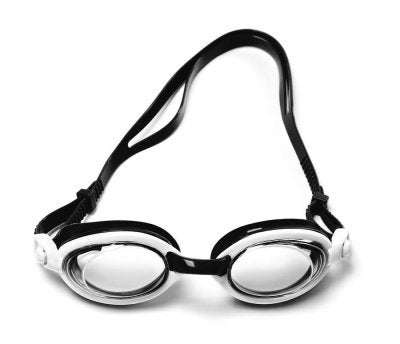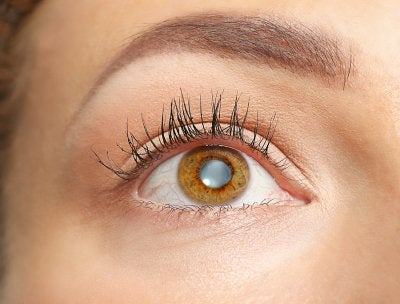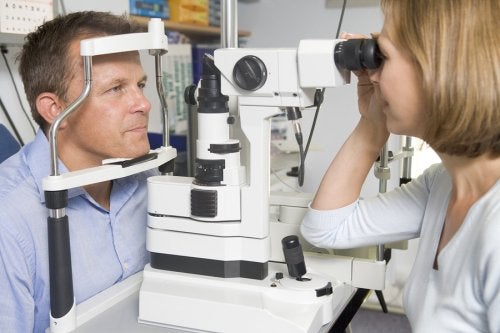-
Tips for Avoiding Common Eye Injuries in Sports
Sports are a great way to get physically fit and connect with peers, but these activities are also risky. Thousands of sports-related eye injuries are reported each year in the U.S. Many of these are preventable. During Sports Eye Safety Month this April, talk to an eye doctor in Chicago about protecting your vision. Your ophthalmologist can help you learn about the potential risks of your favorite sports and how to reduce these risks.

Get Informed About the Risks
Ophthalmologists recognize low risk, high risk, and very high risk categories of sports. A low-risk sport is one that involves no airborne objects, no objects that are swung such as racquets, and no bodily collisions. Some common examples are swimming, cycling, and track and field. High-risk sports do involve those risk factors. A few examples are baseball, hockey, football, and fencing. A very high-risk sport is one that involves risk factors of eye injuries and does not require participants to wear eye protection, such as boxing and martial arts. When you see an eye care professional, he or she can advise you as to the types of eye injuries that might occur with your chosen sport. Most sports-related injuries are caused by blunt force trauma. Penetrating injuries are less common in sports, but cannot be completely ruled out. There has been at least one instance of a fishing hook penetrating an eye .
Choose Protective Eyewear
Protective eyewear should always be worn for high-risk and very high-risk sports, even if the sports organization does not require it. It isn’t wise to rely solely on face masks as a means to prevent eye injuries, since sports equipment or a teammate’s fingers could slip through the mask. Protective eyewear should be specific to the sport you’ve chosen. For example, your eye doctor will recommend sports goggles with polycarbonate lenses for playing basketball and racquet sports.
Encourage Compliance in Children
Some children may resist wearing protective eyewear, especially if their teammates aren’t wearing it or if they feel self-conscious about their looks. To encourage compliance, parents can explain what might happen if a child fails to wear protective eyewear. Older children may be told that, if they wear regular eyeglasses, these can shatter and penetrate the eyeball. Parents can convince younger children to protect their eyes by having them shut their eyes and try to perform common tasks without the benefit of sight.
-
What to Expect from Cataract Surgery
Cataracts are common among older adults. These are areas of clouding on the lens of the eye. If you experience blurry vision, worsening night vision, and halos around light sources, your ophthalmologist will evaluate you for cataracts. It can be alarming to be diagnosed with condition that affects something as precious as your vision, but there is an effective treatment option available: cataract surgery . Discuss what you can expect from the procedure with your cataract surgeon serving Chicago.

Preparing for Cataract Surgery
It may not be necessary to have the procedure right away. Many patients find that their symptoms are barely noticeable. When cataracts grow larger and begin interfering with daily life, your cataract surgeon will help you prepare for the procedure. First, you’ll have a thorough eye exam to measure your eye’s size and shape. You’ll likely be asked not to consume food or liquids for 12 hours before your appointment. It will be necessary to have someone else drive you home from the optical center. You’ll be awake during the procedure, but you won’t be able to feel anything because the cataract surgeon will numb the eye. Some people find it helpful to use a prescribed sedative to help them relax.
Undergoing Cataract Surgery
During this procedure, the ophthalmologist removes the affected lens and implants an artificial replacement, which is known as an intraocular lens (IOL). Your surgeon may perform laser-assisted cataract surgery, which relies on a precise laser to make the incision. The lens is broken up and removed through the incision. Then, the new lens is placed. Stitches usually aren’t required because the incision is tiny. The new lens restores both near and distance vision.
Recovering from Cataract Surgery
Immediately after the procedure, your surgeon will place a protective patch over the treated eye. You’ll rest for about 30 minutes to an hour before a responsible adult can drive you home. Follow your surgeon’s instructions for your recovery, which will include using the eye shield for several hours after the surgery and while sleeping. In addition, your surgeon may ask you to take the following precautions:
- Rest quietly for a few days
- Avoid driving until your eye doctor clears you
- Use eye drops as prescribed
- Avoid rubbing or applying any pressure to the eye
- Go to a follow-up appointment
- Call your eye doctor if side effects develop
It’s normal to experience some discomfort, which should go away within a few days. Expect complete healing in four to eight weeks.
-
Eye Protection for Tennis Players
If you play tennis or plan to learn how, it’s time to schedule an appointment with an ophthalmologist. At an optical center in Chicago, you can learn about the specific risks associated with tennis, including eye injuries that may cause vision loss. Your ophthalmologist can recommend protective eyewear specifically for tennis. He or she will ensure that your eyewear fits you properly for maximum protection.
For more tips on eye care and injury prevention, watch this video. The eye doctor featured here explains that the polycarbonate lenses found in protective eyewear can block projectiles such as tennis balls, even when these objects are traveling at up to 90 miles per hour. She also discusses the importance of ultraviolet (UV) protection to guard against cataracts, lesions, and tumors.
-
The Link Between Diabetes and Glaucoma
After you have been diagnosed with diabetes, your ophthalmologist will be an important member of your diabetes care team. This is because your disease places you at risk of eye health complications, including glaucoma. People with diabetes are thought to be twice as likely to develop open-angle glaucoma compared to non-diabetics. Interestingly, people who already have open-angle glaucoma are at a higher risk of developing type 2 diabetes compared to people without glaucoma. At an optical center in Chicago , diabetic patients can undergo testing for glaucoma. The sooner glaucoma is detected and treated, the better the outcome will be. Your eye doctor may ask you to return to the optical center for routine exams more frequently than patients without diabetes.
In addition to getting your vision checked regularly, you can protect your eye health and systemic health by following your primary care physician’s diabetes management guidelines. You may be asked to take oral medications or injected insulin to control your blood sugar levels. Lifestyle changes like careful meal planning and regular exercising are other essential ways to reduce the risk of diabetes-related complications like glaucoma.

